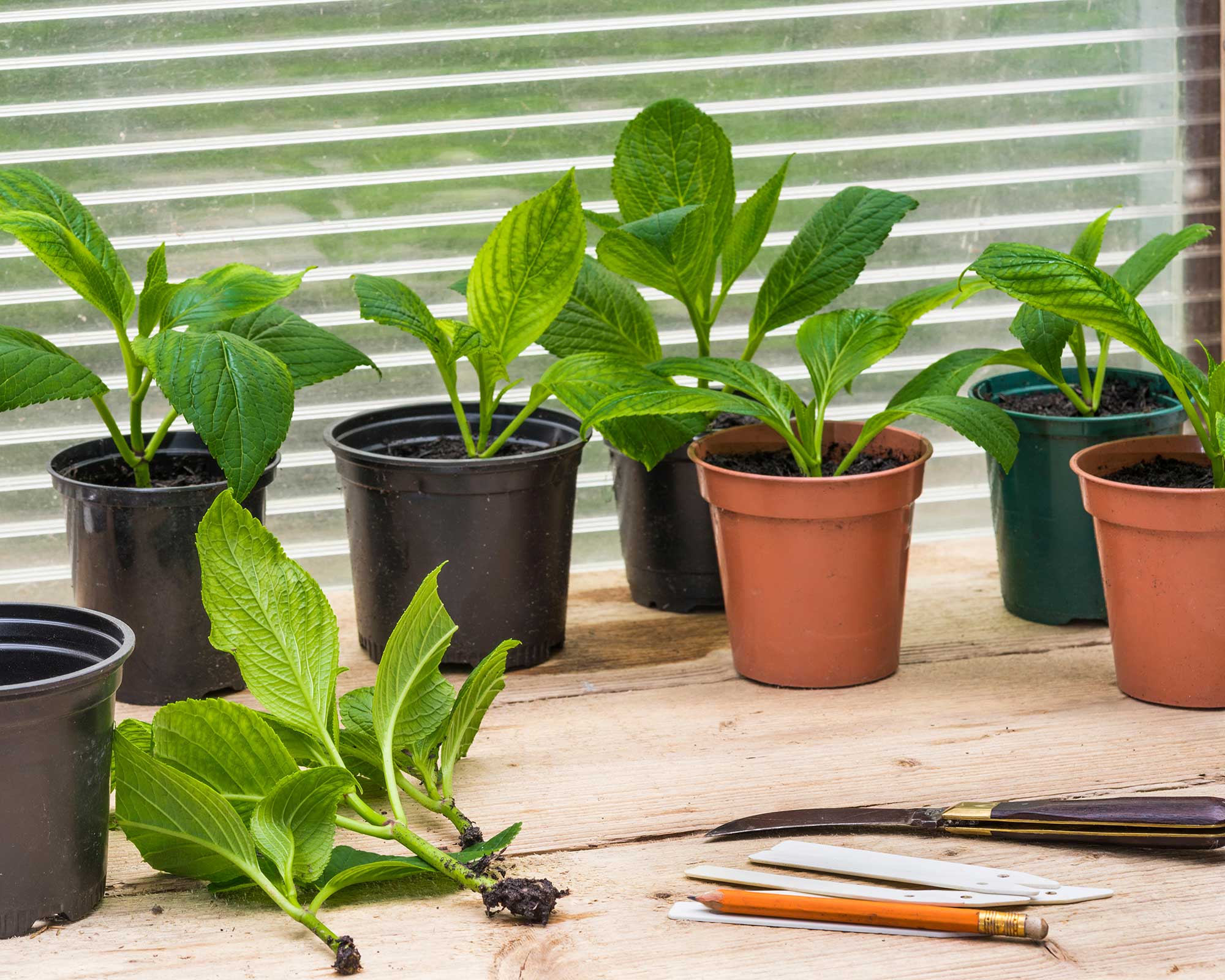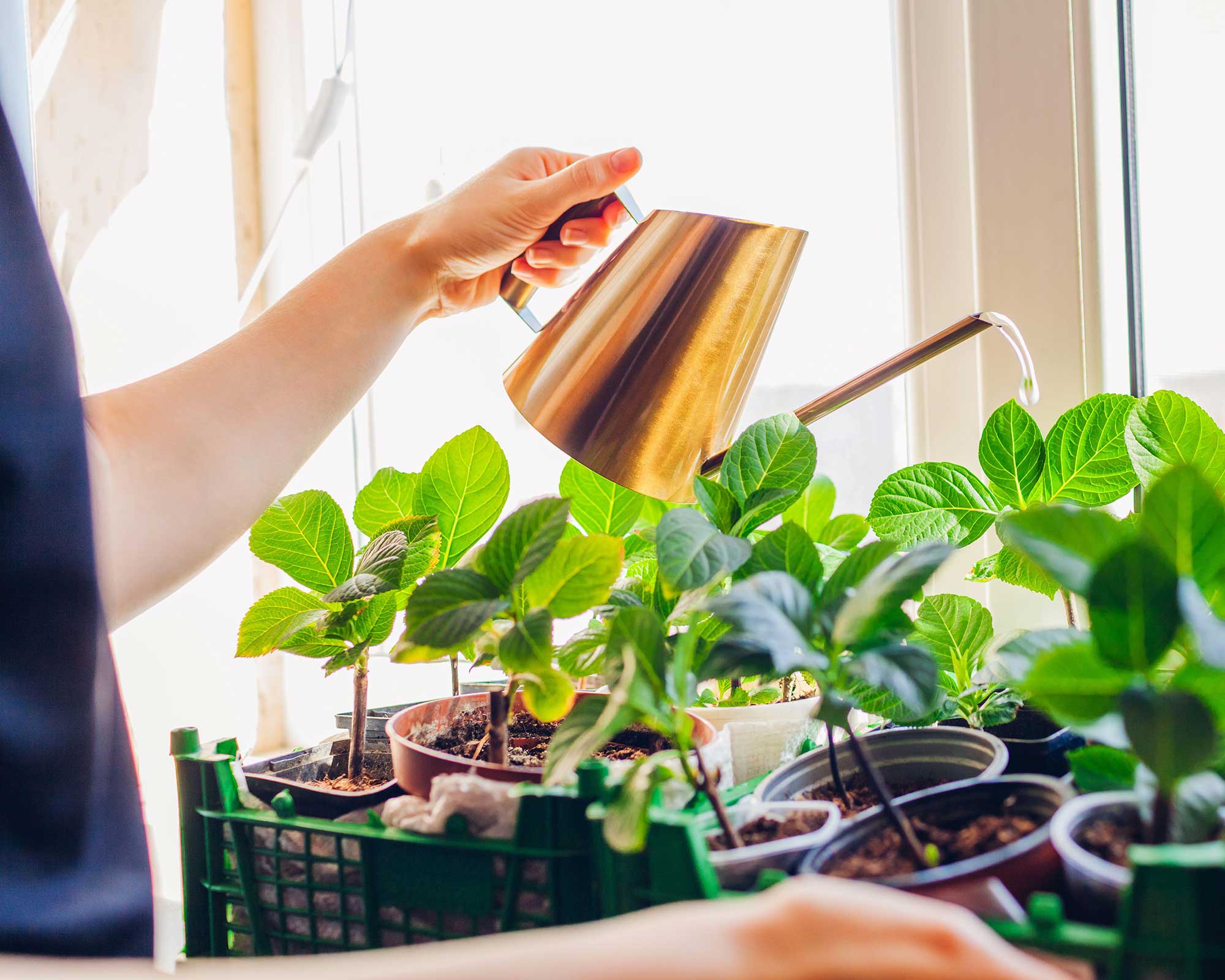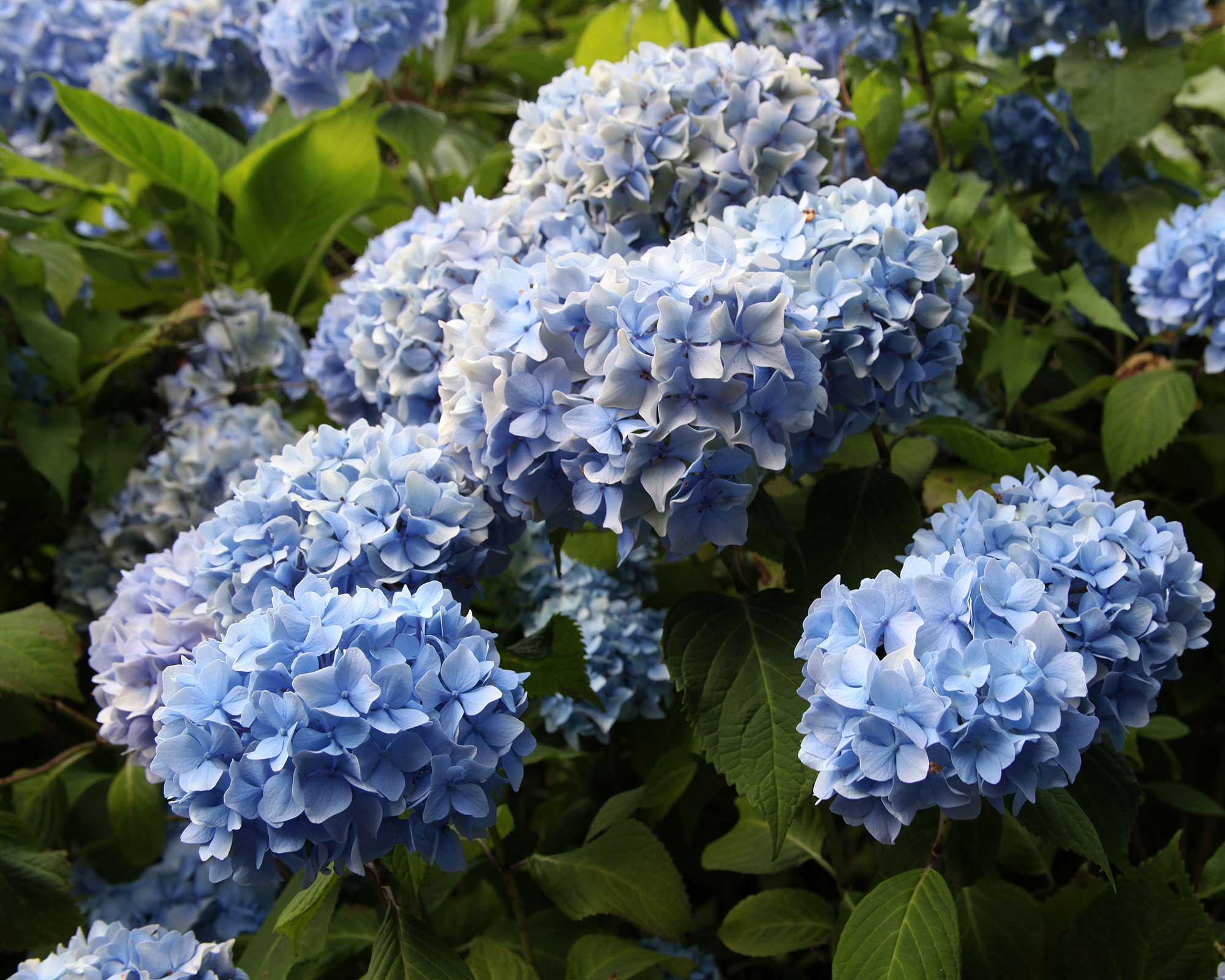Propagating hydrangeas: simple ways to get more stunning shrubs for free
Bring extra structure and color to your garden by propagating hydrangeas – our guide explains how to do it


Propagating hydrangeas will allow you to get more of these gorgeous plants without splashing the cash. And, with a bit of patience and know-how, it's not too tricky.
With their abundance of impressively-sized blooms in blue, pink, lime-green, or white, it's no surprise that these shrubs have made a serious comeback recently. They bring stylish structure and form to both contemporary and cottage-style garden schemes, and hydrangea care is undemanding, too.
So, if you're looking for a budget-friendly approach for filling your garden with these show-stopping shrubs, this guide is sure to come in handy.

Easy steps for propagating hydrangeas from cuttings
Taking cuttings from plants is a wonderful way to increase your collection and add more foliage and flowers to your plot for free. And with hydrangeas, it's simple.
You can take softwood cuttings from spring to early summer. As the RHS advises, take your cutting from the soft and flexible young shoot tips, which will root readily. Alternatively, you can take semi-ripe cuttings in mid-summer (which will have a woody base), or hardwood cuttings in winter.
Whichever approach you go for, ensure you use a sharp, clean pair of secateurs. Our buying guide to the best secateurs has plenty of top picks if you need an update.
Once you have your cuttings, put them into a pot of gritty compost, water well, then place the pot in a propagator or cover it with a transparent plastic bag for around six weeks. If you're using the plastic bag approach, briefly remove and shake it out daily to avoid too much condensation building up.
Keep your hydrangea cuttings somewhere frost-free over winter, then pot on when fresh growth appears in spring. Remember to harden them off before planting them in their final position outdoors. It can take a couple of years for them to start flowering.
Amateur Gardening expert John Negus suggests liquid feeding your hydrangea cuttings with a high-potash tomato fertilizer. 'Apply it weekly, making sure that the cutting compost is damp,' he says.

Should you remove developing flowers on your hydrangea cuttings?
It's best to get rid of any flowers you spot on young hydrangea cuttings.
'It is not unusual for flower buds to form at the tips of hydrangea cuttings, but if you let them bloom they are liable to weaken growth,' says John. 'The best way to remove them is with pointed scissors to avoid damaging fragile stems.'

How to propagate hydrangeas from seed
It is also possible to grow hydrangeas from seed, although growing them from cuttings is much quicker and easier.
If you already have hydrangeas in your garden you can get free seeds from them. Collect the tiny seeds by cutting off the dried flower heads and placing them in paper bags – allow them to continue to dry here for a few days. Then, shake the bag to allow the seeds to fall out.
Once you have your seeds, it's simply a case of sowing them in trays of potting soil, without covering them with the soil. Put them somewhere sheltered and sunny – a windowsill is ideal – and keep them moist – they should germinate within a couple of weeks. Pot them on when large enough to handle.

Can you divide hydrangeas to make new plants?
Another common way to propagate many outdoor and indoor plants is by dividing them up. So if you love landscaping with hydrangeas in your garden, you may be wondering, 'can you split a hydrangea?'.
Unfortunately, as John explains, dividing hydrangeas can be impractical as most have a single stem. But there can be exceptions.
'Occasionally, if a thicket of shoots forms, the bush can be dug up and split into well-rooted clumps,' he says.
If yours are like this, go ahead and divide the bushes when leaves fall, in late autumn. 'Then, shorten the stems to 18in (45cm) of the base. Replant the divisions in holes two or three times the diameter of the rootball. Work in lots of compost or manure and set plants at the same depth as before.
'Water them well to ensure the roots are in close contact with the soil,' he adds.

The garden was always a big part of Holly's life growing up, as was the surrounding New Forest where she lived. Her appreciation for the great outdoors has only grown since then. She's been an allotment keeper, a professional gardener, and a botanical illustrator – plants are her passion.
